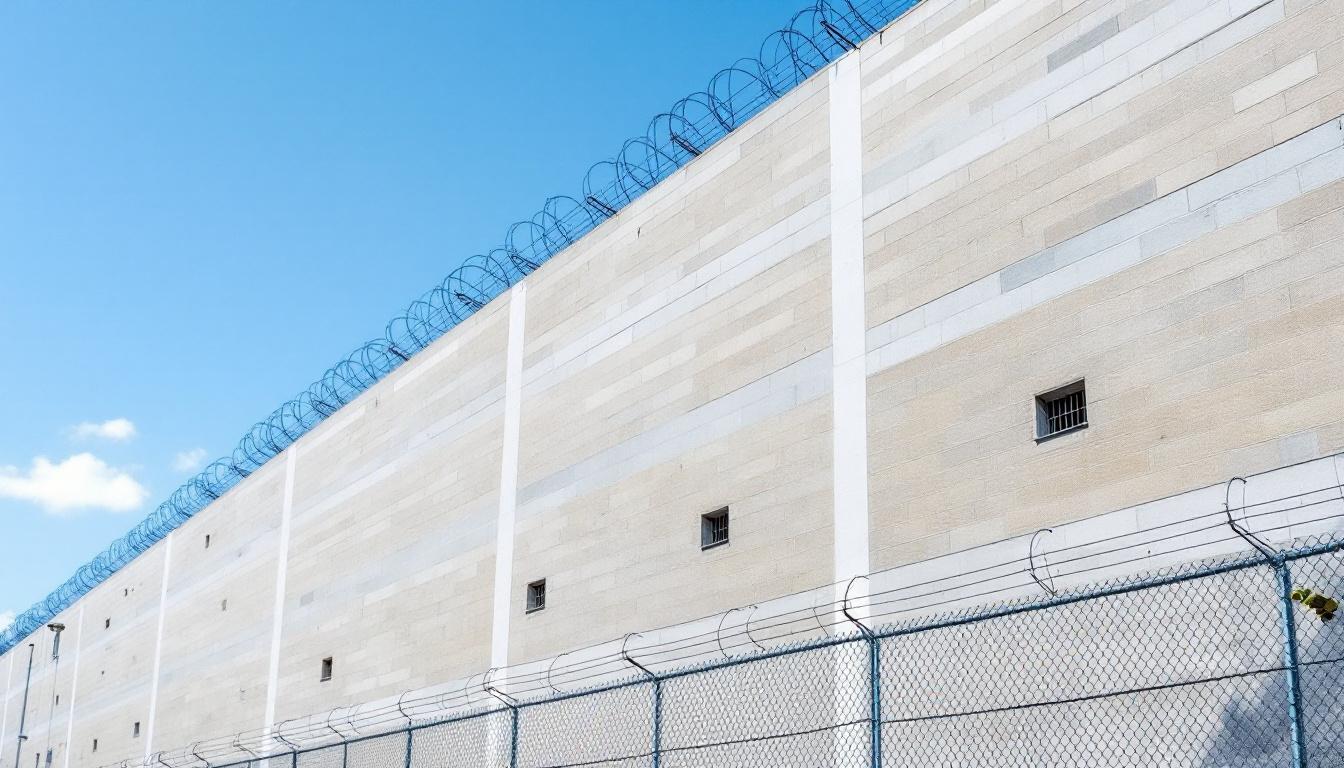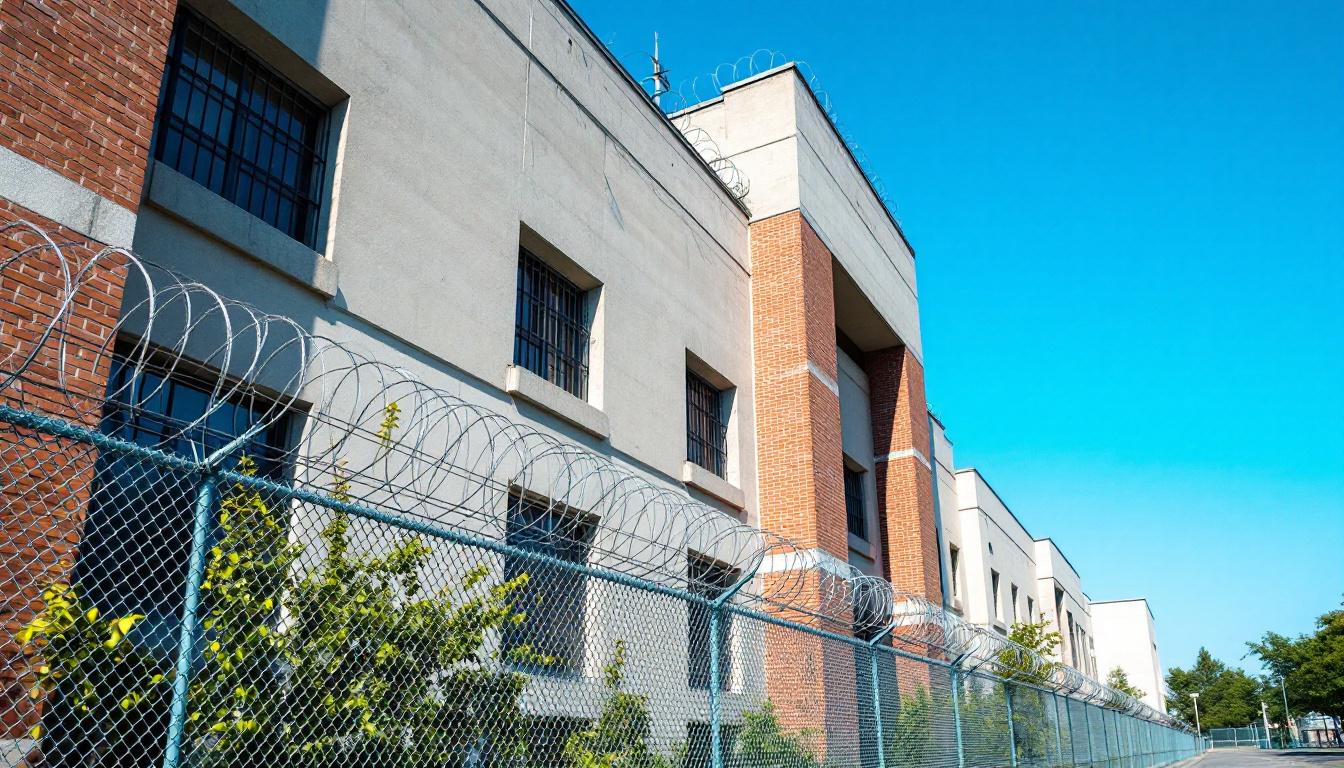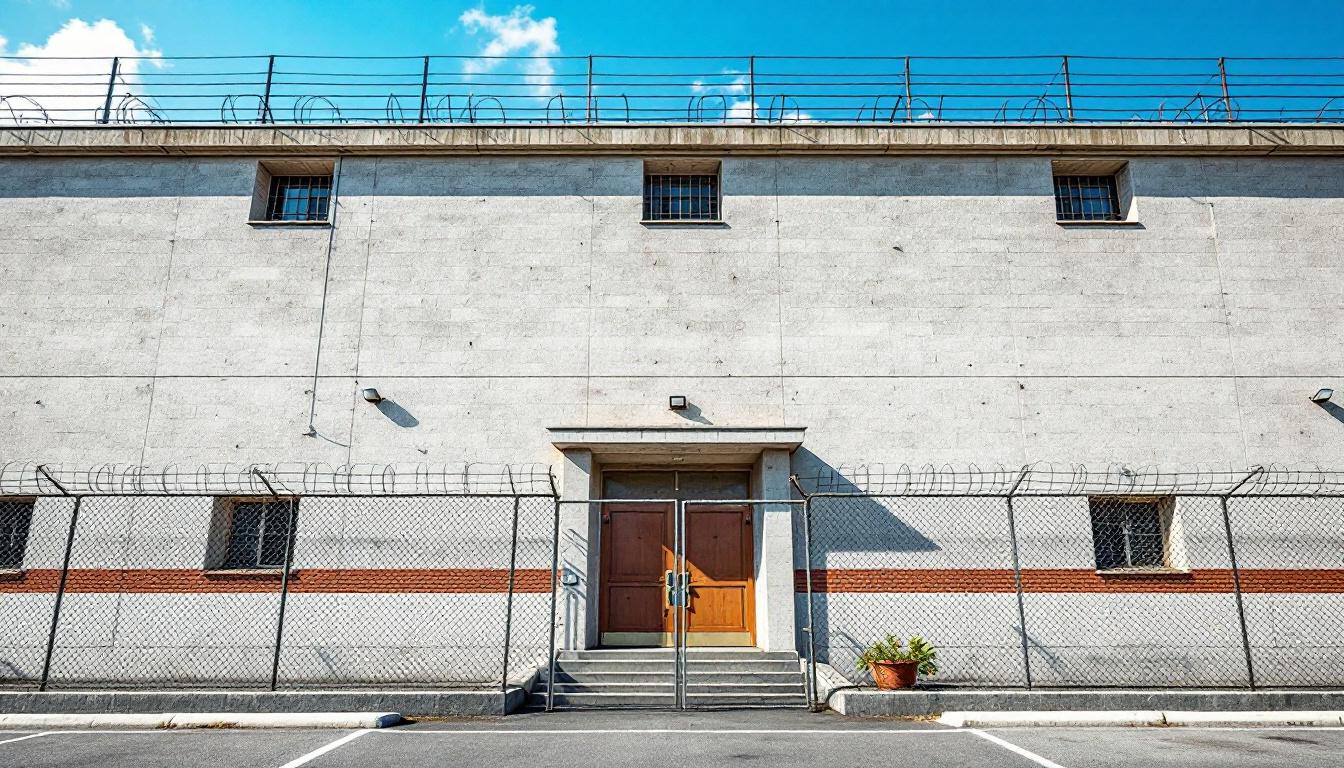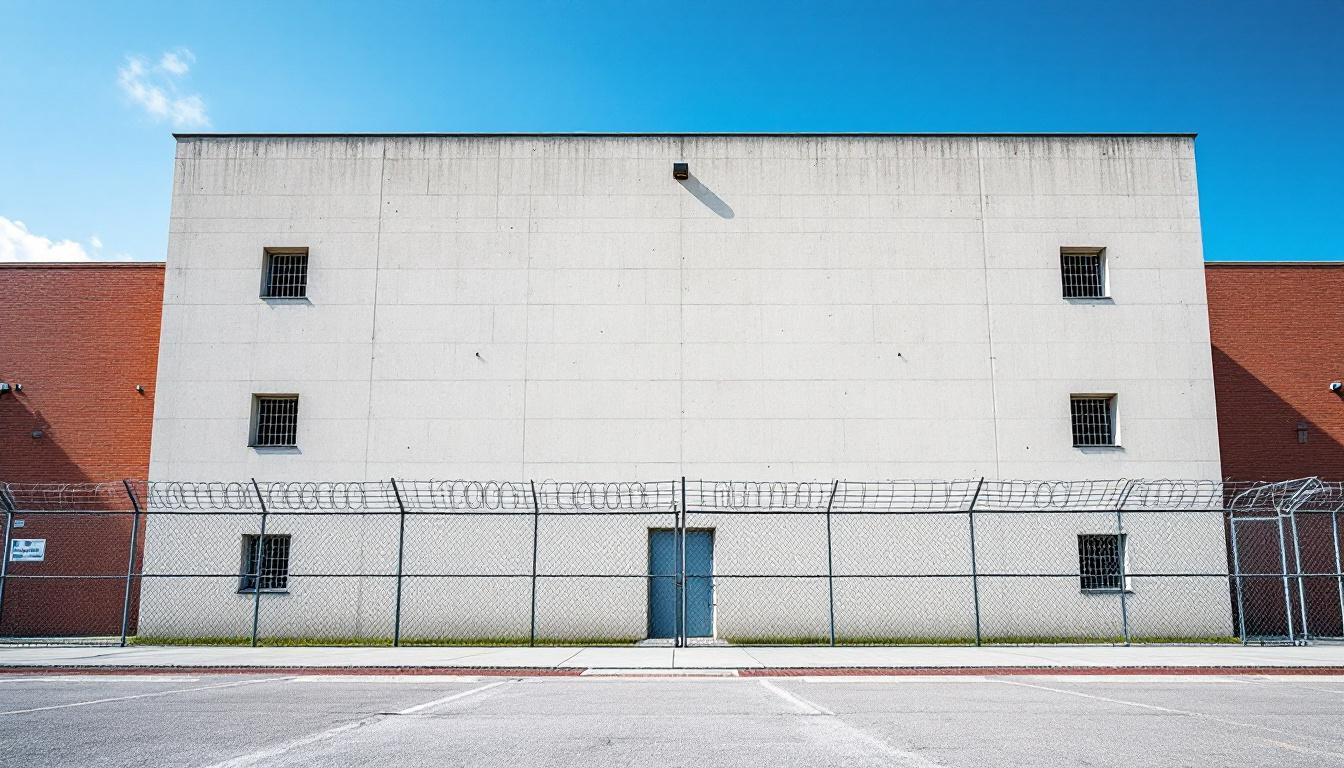
Quick Navigation
How to contact an inmate at John Sealy Hospital
This comprehensive guide will walk you through how to connect with an inmate at John Sealy Hospital. Follow the steps below to find an inmate and send letters and photos:
- Search for the inmate using our search tool below
- Create your account or log in to Penmate
- Write your message (up to 6,000 characters)
- Send instantly - inmates receive printed copies daily
Find an Inmate
Search for an inmate to start communicating today
Tip: You can search by first name, last name, or inmate ID number
To contact a person at John Sealy Hospital start by searching for the person on the official facility website. Perform a search by following these steps:
- Step 1: Enter their first name and last name into the search form and click "Search"
- Step 2: Locate their inmate record
- Step 3: Write down their Inmate ID and any housing information provided
Important! Be sure to enter the person's full name. Nicknames should not be used.
How to Send Messages to Inmates

You can use your phone or computer to send emails, letters, and photos to an inmate. Messages are sent electronically to inmate tablets or kiosks at the facility. If you would like to send a message, start by searching for an inmate at John Sealy Hospital.
Sending Photos and Postcards

A great way to send love and support to a loved one at John Sealy Hospital is to send photos and postcards. It only takes a few minutes to send photos from your phone and it makes a huge difference. You can also mail postcards with words of support and inspiration, or design your own postcard for special moments like birthdays and holidays.
Important! Be sure not to send any explicit photos or they may not be approved by the facility. You can also use a photo printing app like Penmate to make sure your photos are printed at the correct size (4x6 or 3x5) and are mailed according to the rules and regulations of John Sealy Hospital.
Frequently asked questions about John Sealy Hospital
-
How long does it take to deliver a message?
If you're sending an email message your letter is usually delivered within 24-48 hours. For messages sent via mail you should expect delivery within 3-7 days. All messages will need be approved by John Sealy Hospital.
-
How much does it cost to send a message to John Sealy Hospital?
You can send a message free using your phone or mail a message via USPS for the price of a $0.60 stamp and envelope. You can also purchase credits or e-stamps from services starting at $1.99.
-
What services can I use to contact an inmate at John Sealy Hospital?
Penmate
You can use Penmate to send letters and photos to an inmate from your phone. It's an easy way to stay in touch during your loved one's incarceration. Use the inmate locator to find an inmate's location and contact information, then you can send messages within a few minutes.
Securus messaging
Securus may be another option for communicating with an inmate at John Sealy Hospital. You can create a friends and family account and purchase credits to send messages. All messages will be reviewed and must be approved by the facility.
JPay
Some county jails and state prisons may support sending messages with JPay. You must register an account with the system, find your loved one, and purchase stamps to send messages. For some locations you can also attach photos.
Smart Jail Mail
You may also check if Smart Jail Mail is available at John Sealy Hospital. Smart Jail Mail is operated by Smart Communications and has contracted with some state and county jails. After purchasing credits, your messages and photos are sent to the facility, printed out, and then handed out to your loved one.
-
What is the mailing address of John Sealy Hospital?
Mailing address:
John Sealy Hospital
301 8th St
Galveston, TX 77555
Phone: (409) 772-1011Business hours:
- Monday: Open 24 hours
- Tuesday: Open 24 hours
- Wednesday: Open 24 hours
- Thursday: Open 24 hours
- Friday: Open 24 hours
- Saturday: Open 24 hours
- Sunday: Open 24 hours
-
What are the visiting hours at John Sealy Hospital?
Visiting hours at John Sealy Hospital vary by housing unit and security level. Generally, visits are scheduled on weekends and holidays, with some facilities offering weekday visits. Contact the facility directly at (409) 772-1011 or check their website for the current visiting schedule. Visits typically last 30-60 minutes and must be scheduled in advance.
-
What items are prohibited when sending mail to John Sealy Hospital?
Prohibited items typically include: cash, personal checks, stamps, stickers, glitter, glue, tape, staples, paperclips, polaroid photos, musical or blank greeting cards, hardcover books, magazines with staples, and any items containing metal or electronics. Only send letters on plain white paper with blue or black ink. Photos must be printed on regular photo paper (no Polaroids). Always check with John Sealy Hospital for their specific mail policies.
-
How do I send money to an inmate at John Sealy Hospital?
You can send money to an inmate at John Sealy Hospital through several methods: 1) Online using JPay, Access Corrections, or the facility's approved vendor, 2) Money orders mailed directly to the facility with the inmate's name and ID number, 3) Kiosks located in the facility lobby, or 4) Over the phone using a credit or debit card. Fees vary by method, typically ranging from $2.95 to $11.95 per transaction.
-
Can I schedule a video visit with an inmate at John Sealy Hospital?
Many facilities now offer video visitation as an alternative to in-person visits. At John Sealy Hospital, video visits may be available through services like Penmate, Securus Video Connect, GTL, or ICSolutions. Video visits typically cost $10-20 for 20-30 minutes and must be scheduled in advance. You'll need a computer or smartphone with a camera and reliable internet connection. Contact the facility for their specific video visitation policies and approved vendors.
-
What identification do I need to visit an inmate at John Sealy Hospital?
All visitors must present valid government-issued photo identification such as a driver's license, state ID, passport, or military ID. Minors must be accompanied by a parent or legal guardian who can provide the minor's birth certificate. Some facilities require visitors to be on the inmate's approved visitation list, which may require a background check. Contact John Sealy Hospital for specific ID requirements and visitor approval procedures.
-
How can I find out an inmate's release date?
To find an inmate's release date at John Sealy Hospital, you can: 1) Use the online inmate search tool if available, 2) Call the facility's records department, 3) Contact the inmate's case manager or counselor, or 4) Have the inmate provide this information during a call or visit. For privacy reasons, some facilities only release this information to immediate family members.
Facility Overview
Official Website

About John Sealy Hospital
Within Dallas's urban landscape, Hospital-Galveston, TX operates as a specialized correctional facility that addresses the complex intersection of healthcare needs and custodial responsibilities within Texas's broader correctional framework. This TX correctional facility typically serves residents who require ongoing medical attention while maintaining the security protocols essential to institutional operations.
The facility generally focuses on evidence-based approaches to both medical care and rehabilitative programming, recognizing that effective treatment often requires addressing underlying factors that may contribute to criminal behavior. Residents services commonly include medical monitoring, mental health support, and educational opportunities designed to prepare individuals for successful community reintegration. The correctional facility typically coordinates with various healthcare providers and social service agencies to ensure continuity of care, though the specific nature of these relationships may vary based on individual resident needs and available community resources.
As part of Texas's correctional system, Hospital-Galveston, TX generally emphasizes rehabilitation through structured programming that may include vocational training, substance abuse counseling, and life skills development. The facility's location in Dallas provides access to urban resources while maintaining the controlled environment necessary for both security and therapeutic intervention, reflecting the state's broader commitment to addressing the healthcare needs of incarcerated populations through specialized institutional settings.
Programs & Services
Comprehensive rehabilitation initiatives at this Galveston facility emphasize transformative skill development through carefully structured educational and vocational pathways. The institution's philosophy centers on equipping residents with practical competencies that facilitate successful community reintegration, recognizing that meaningful preparation extends far beyond traditional correctional approaches. These multifaceted initiatives typically address both immediate educational needs and long-term career development, creating a foundation for sustainable post-release success.
Educational and vocational initiatives may deliver extensive training opportunities designed to enhance residents' marketability upon release. Vocational training initiatives often include hands-on instruction in various trades, allowing participants to develop measurable skills while earning industry-recognized credentials. Moreover, specialized programs in barbering and cosmetology provide residents with creative outlets while building expertise in service-oriented professions that offer entrepreneurial possibilities and stable employment prospects in diverse communities.
Support services and therapeutic initiatives encompass a broad spectrum of personal development opportunities that address residents' holistic needs. Work programs typically provide structured employment experiences that build responsibility and work ethic while contributing to facility operations. Faith-based initiatives may offer spiritual guidance and community support networks that continue beyond incarceration. Life coaching services often focus on developing essential life skills, decision-making capabilities, and goal-setting strategies. Moreover, family reunification initiatives work to strengthen relationships and communication patterns, recognizing that robust family connections significantly enhance successful reintegration and reduce recidivism rates through sustained emotional support systems.
Daily Life & Visitation
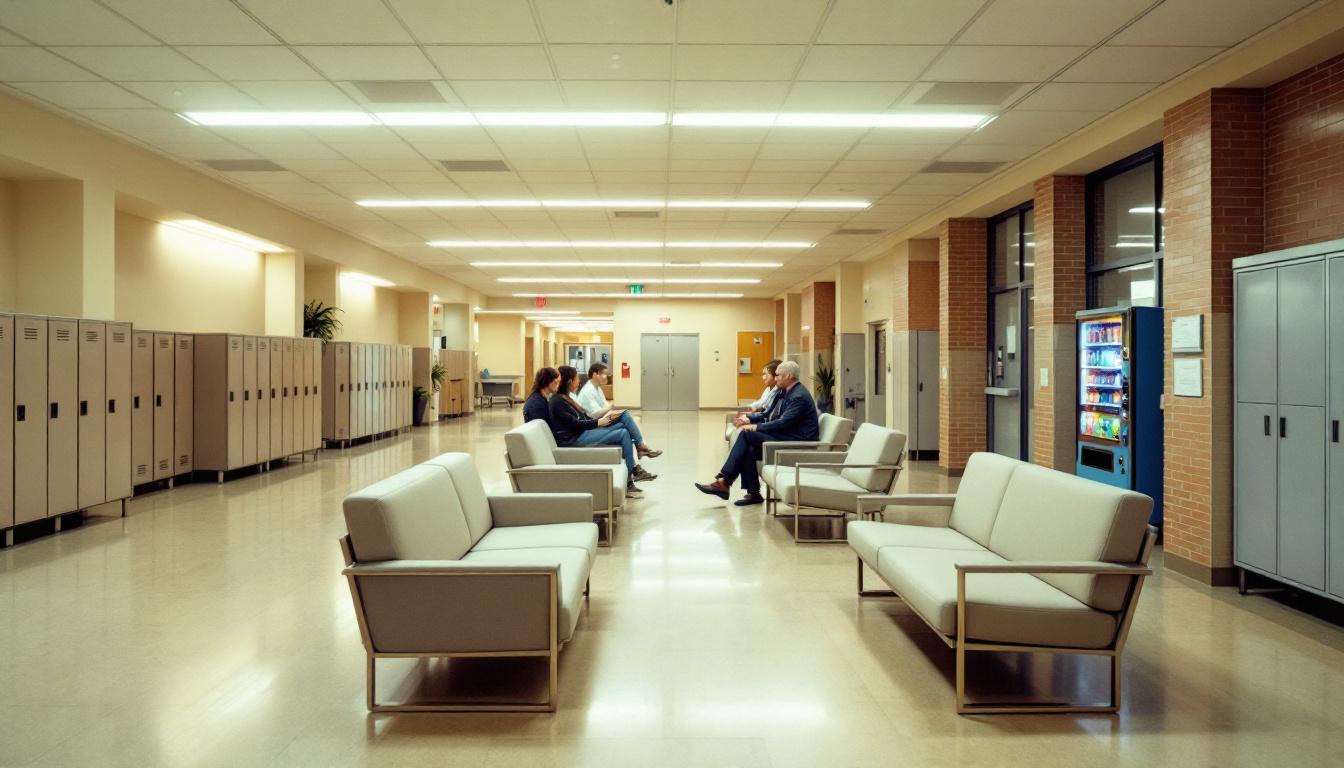
The steady rhythm of scheduled activities and designated time blocks creates a framework that many residents find provides much-needed predictability in their daily experience. At present, the facility operates with a structured approach where residents actively participate in a routine that typically begins with early morning counts and proceeds through organized meal periods, work assignments, and recreational opportunities. This consistent schedule generally helps residents establish healthy patterns and maintain a sense of order throughout their time at the facility.
Living accommodations at the facility are organized into housing units where residents typically share cells or dormitory-style arrangements, depending on their classification level and available space. Moreover, the dining arrangements follow a structured schedule with residents generally eating meals in designated areas at specific times, with menus that aim to provide balanced nutrition while accommodating various dietary needs and restrictions. Personal property allowances usually permit residents to maintain some personal items, and commissary services typically offer additional food items and hygiene products that residents may purchase with funds from their accounts.
The facility generally delivers programming through various work assignments that may include kitchen duties, maintenance tasks, and facility operations support, providing residents with opportunities to develop skills and maintain productive routines. Whereas recreational activities often include access to exercise equipment, outdoor recreation time, and television viewing in common areas, visitation policies typically allow for scheduled visits from approved family members and friends. Communication options usually encompass telephone access and mail services, enabling residents to maintain important connections with their support systems outside the facility, which often proves essential for successful reintegration planning.
Ready to Connect?
Start communicating with your loved one today
Search for an Inmate
